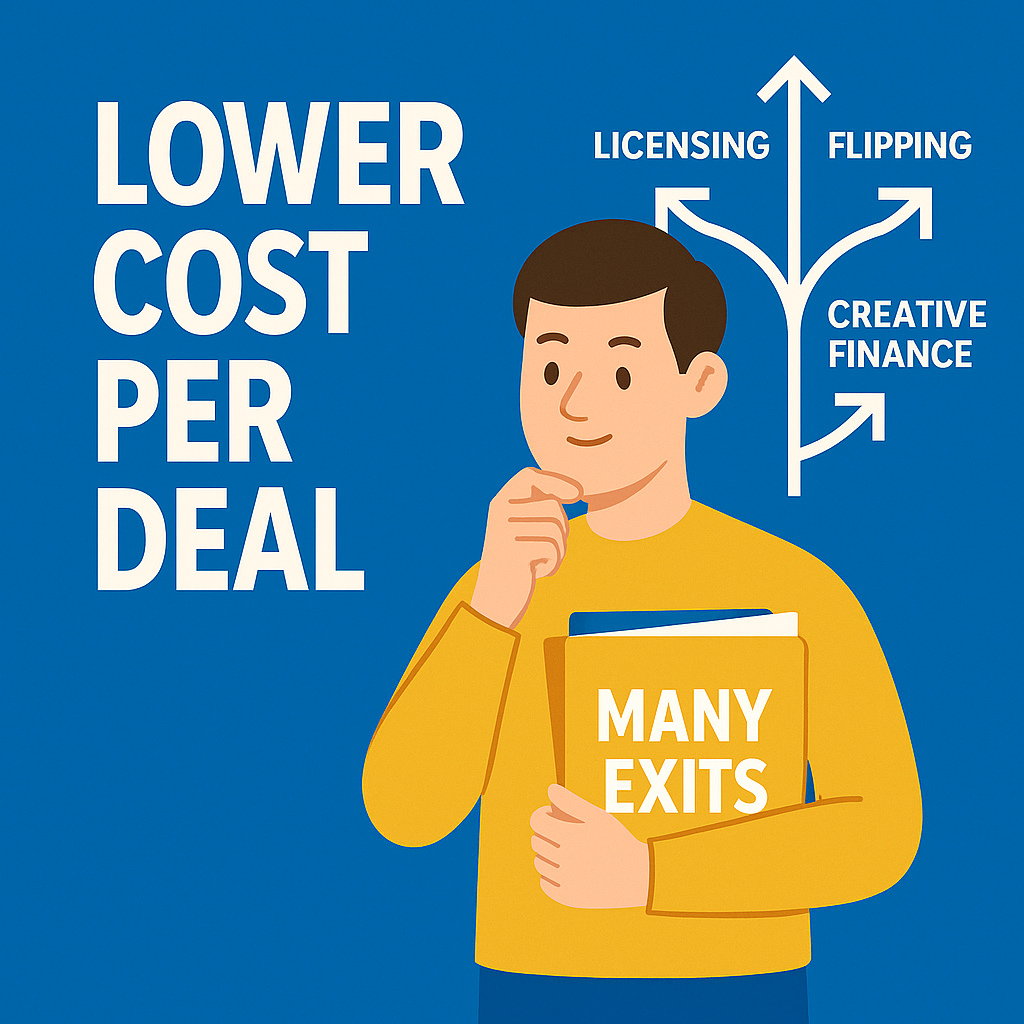In today’s real estate market, the challenge of building homes quickly, cost-effectively, and with minimal environmental impact is a pressing issue. Traditional construction methods, reliant on lumber, metal, and concrete, are both costly and harmful to the environment. However, a groundbreaking innovation is transforming the industry—3D-printed homes. Industry veteran Gene Eidelman, with over 30 years of experience, is at the forefront of this change, creating sustainable housing solutions that meet the housing demand and reduce waste.
Eidelman’s approach to real estate development aims to offer a fast, eco-friendly alternative to traditional construction, specifically targeting the pressing need for affordable housing. His vision of addressing housing shortages while minimizing environmental damage is a beacon for real estate investors looking to attract motivated seller leads and generate profit while contributing to the community.
3D Printing Homes: The Future of Real Estate Development
For decades, the construction industry has lagged in innovation compared to other sectors like automotive manufacturing. The fundamental approach to building homes—hammer, nails, and lumber—remains largely unchanged. However, the rise of 3D-printed homes, pioneered by Eidelman’s company, J Print Homes, is revolutionizing the construction process.
3D printing technology allows builders to print a home’s exterior module in just one day, drastically reducing construction time compared to the months required for traditional builds. Unlike conventional methods, this process doesn’t rely on lumber or metal. Instead, it uses a combination of recycled plastic and fiberglass, which not only reduces construction waste but also lowers the cost of building materials.
With 40 million tons of plastic generated annually in the U.S., and only 2 million tons recycled, J Print Homes’ use of recycled plastic addresses both a housing crisis and an environmental disaster. This method produces a durable, cost-effective alternative to traditional building materials, giving real estate investors an edge in the market by providing fast, affordable housing solutions.
Benefits of 3D-Printed Homes for Real Estate Investors
- Cost-Effective Construction
One of the main advantages of 3D-printed homes is their affordability. The cost of building with recycled plastic and fiberglass is significantly lower than traditional methods using lumber, metal, and roofing materials. This reduction in materials costs allows investors to construct homes at a fraction of the price, making it easier to generate profits in a competitive market. - Speed of Construction
Time is money, especially in real estate. The ability to print a house’s exterior in a single day accelerates the entire building process. For real estate investors, this speed means quicker turnaround times for properties, allowing them to complete more deals in less time. For those targeting motivated seller leads, the ability to offer a ready-to-live home in just weeks can be a major selling point. - Eco-Friendly Building Materials
Traditional construction is one of the top three polluting industries globally, primarily due to the extensive use of cement, which produces large amounts of CO2. By contrast, 3D-printed homes rely on recycled materials, significantly reducing the environmental footprint. Real estate investors who prioritize sustainability can promote their properties as environmentally friendly, attracting buyers who value eco-conscious living. - Customization and Flexibility
The versatility of 3D printing extends to design as well. Traditional homes are often constrained by the need for straight lines and right angles due to the limitations of building materials. With 3D printing, curved walls and innovative architectural designs are not only possible but also more affordable. This flexibility allows investors to create unique, aesthetically pleasing homes that stand out in the market.
Meeting Housing Shortages with 3D-Printed Homes
The United States faces a housing shortage of 3 to 10 million units, driven by high interest rates, rising construction costs, and bureaucratic delays in permitting. Globally, the problem is even more severe, with countries like Turkey and Hawaii experiencing massive losses due to natural disasters. Eidelman’s 3D-printed homes offer a viable solution to these housing shortages by providing fast, scalable, and affordable housing options.
By manufacturing the homes in a controlled factory environment, Eidelman ensures consistent quality and eliminates the delays caused by on-site construction, such as weather conditions and labor shortages. Once printed, the homes are shipped to their final location, where they can be assembled quickly, helping to alleviate housing shortages in both the U.S. and abroad.
The Future of Affordable Housing: Addressing Homelessness
While J Print Homes’ 3D-printed houses are an attractive option for real estate investors, they also offer a powerful solution to another pressing issue—homelessness. With over 75,000 homeless individuals in Los Angeles County alone, the need for affordable housing is critical. Eidelman’s mission is to make affordable housing truly affordable, and he has committed to dedicating 10-20% of his production to providing homes for nonprofit organizations and governments tackling the homelessness crisis.
These 3D-printed homes are not only cost-effective but also relocatable, offering flexibility in providing temporary housing for people in crisis. Additionally, at the end of their lifecycle, the homes can be recycled, contributing to a circular economy that benefits both the environment and the housing market.
The Potential for Real Estate Investors
For investors looking to expand their portfolios, 3D-printed homes present a unique opportunity to combine profitability with sustainability. The ability to build affordable, high-quality homes quickly can provide a competitive edge in the market, especially when targeting motivated seller leads or entering areas with housing shortages.
Whether you’re looking to add value to a property by constructing an accessory dwelling unit (ADU) or exploring opportunities in tiny homes and modular housing, 3D printing offers flexibility and cost-efficiency that traditional methods simply cannot match. By embracing this innovation, real estate investors can not only grow their business but also contribute to solving the global housing crisis.
Build Your Real Estate Business with 3D-Printed Homes
If you’re a real estate investor looking to stay ahead of the curve, now is the time to explore the potential of 3D-printed homes. Whether you’re focused on flipping, wholesaling, or adding value through ADUs, this technology can help you build faster, reduce costs, and attract motivated seller leads. Get started today and be a part of the future of real estate development—affordable, sustainable, and profitable.






